Table of Contents
Tracks serve as the cornerstone for a wide spectrum of athletic endeavors, from sprinting and marathons to cycling and equestrian events. These carefully crafted surfaces provide athletes with a consistent and optimal environment to showcase their abilities. In this comprehensive article, we delve into the world of** track**s, exploring their history, diverse types, construction methodologies, essential components, and innovative technologies. Whether you're an athlete seeking to optimize your performance or a** track** enthusiast seeking deeper insights, this Kizworld guide unveils the fascinating world of** track**s.
Escape the Labyrinth of Complexity: Discover the Clarity of Tracks!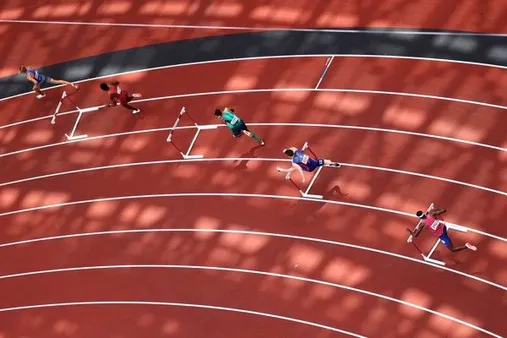
I. Track: A Comprehensive Guide to Creating and Maintaining High-Quality Tracks
Track: A Comprehensive Guide to Creating and Maintaining High-Quality Tracks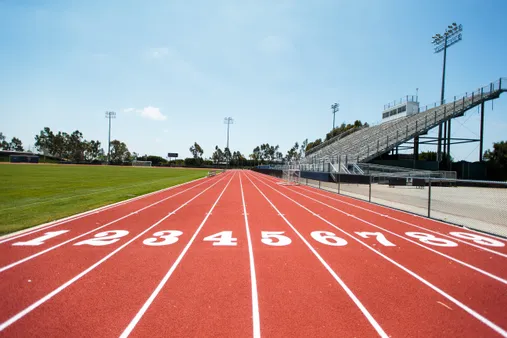
Essential Components of a Track
- Track Surface: The surface of the track is the most important component, as it directly affects the performance of athletes. Common track surfaces include synthetic materials, rubber, and cinder.
- Lanes: Tracks are typically divided into lanes, each of which is assigned to a specific athlete or team. Lanes are marked with lines or cones.
- Starting Blocks: Starting blocks are used by athletes to help them get a good start in races. They are typically made of metal or plastic and have adjustable footrests.
- Finish Line: The finish line is the point at which athletes must cross in order to complete a race. It is typically marked with a line or tape.
Track Design and Layout
The design and layout of a track can vary depending on the type of track and the specific needs of the athletes who will be using it. However, there are some general principles that apply to all tracks.
- Length: The length of a track is typically 400 meters, although some tracks may be shorter or longer.
- Shape: Tracks are typically oval in shape, with two straightaways and two curves.
- Banking: The curves of a track are often banked, which helps athletes to maintain their speed as they go around the curve.
- Infield: The infield of a track is the area inside the oval. It is often used for field events such as long jump, triple jump, and shot put.
Construction and Maintenance of a Track
The construction and maintenance of a track is a complex and specialized process. It is important to use high-quality materials and to follow proper construction techniques in order to ensure that the track is safe and durable.
Once a track is constructed, it is important to maintain it regularly. This includes cleaning the surface, repairing any damage, and watering the track to keep it moist.
Techniques for Improving Track Performance
There are a number of techniques that athletes can use to improve their performance on the track. These techniques include:
- Proper Training: Athletes should train regularly and specifically for the events that they will be competing in.
- Good Nutrition: Athletes should eat a healthy diet that provides them with the energy and nutrients they need to perform at their best.
- Proper Warm-Up: Athletes should warm up properly before each workout or competition.
- Proper Technique: Athletes should use proper technique when running, jumping, and throwing.
- Mental Preparation: Athletes should be mentally prepared for competition and should be able to focus and stay calm under pressure.
Challenges Faced in Track Maintenance and Management
There are a number of challenges that track owners and managers face in maintaining and managing their tracks. These challenges include:
- Weather: Weather conditions can damage tracks, especially if they are not properly maintained.
- Vandalism: Tracks can be vandalized, which can lead to damage and safety hazards.
- Budget: Track owners and managers often have limited budgets, which can make it difficult to maintain tracks properly.
- Staffing: Track owners and managers may also have limited staffing, which can make it difficult to keep tracks clean and safe.
Future Innovations in Track Technology
There are a number of innovative technologies that are being developed to improve the performance and safety of tracks. These technologies include:
- New Track Surfaces: New track surfaces are being developed that are more durable, faster, and safer than traditional surfaces.
- Smart Tracks: Smart tracks are being developed that can track athletes' performance and provide feedback to coaches and athletes.
- Automated Track Maintenance: Automated track maintenance systems are being developed that can clean and repair tracks without the need for human labor.
These are just a few of the challenges and innovations that are facing the track industry. As technology continues to develop, we can expect to see even more innovative and exciting ways to improve the performance and safety of tracks.
Related Posts:
- How to Choose the Right Running Shoes for Your Foot Type and Running Style
- The Benefits of Running for Health and Wellness
- The Best Running Equipment and Gear
II. Track Design and Construction: Laying the Foundation for Success
Track Design and Construction: Laying the Foundation for Success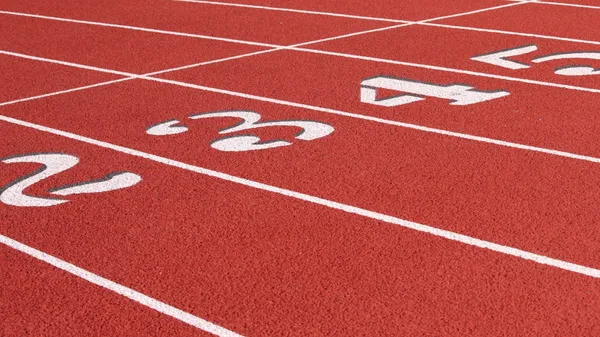
Track Design Principles: Achieving Optimal Performance
The design of a track plays a crucial role in determining its performance and suitability for various athletic events. Several key principles guide the design process, ensuring that the track meets the specific requirements of the intended sport.
- Track Shape and Dimensions: The shape and dimensions of the track are determined by the type of sport it is intended for. Running tracks, for instance, typically consist of an oval with a standard length of 400 meters, while cycling tracks can be velodromes or outdoor tracks with varying lengths.
- Track Surface: The surface of the track is a critical factor affecting athlete performance and safety. Synthetic materials like polyurethane or rubber are commonly used to create a consistent and shock-absorbent surface that provides optimal traction and reduces the risk of injuries.
- Banking and Elevation: Banking, or the傾斜, of the track is designed to provide centrifugal force to athletes as they navigate curves. This allows them to maintain speed and reduces the strain on their bodies. Elevation changes, such as hills or inclines, can also be incorporated to add challenge and variety to the track.
Track Construction Techniques: Ensuring Durability and Safety
The construction of a track involves meticulous attention to detail and the use of specialized techniques to ensure its durability and safety.
- Site Preparation: The first step in track construction is preparing the site by clearing vegetation, leveling the ground, and installing drainage systems to prevent waterlogging.
- Base Layer: A solid foundation is created by laying a base layer of crushed stone or asphalt. This layer provides stability and support for the track surface.
- Sub-Base Layer: A sub-base layer, typically composed of a mixture of sand and gravel, is installed over the base layer. This layer helps distribute weight evenly and provides additional cushioning.
- Track Surface Installation: The track surface is then applied using specialized machinery. Synthetic materials are mixed and spread evenly, and then compacted to create a smooth and consistent surface.
- Finishing Touches: Once the track surface is installed, markings and lines are added to indicate lanes, start and finish lines, and other necessary markings for the specific sport.
Maintenance and Management: Preserving Track Quality
Regular maintenance and management are essential to preserve the quality and safety of a track. Proper care ensures that the track remains in optimal condition for athletes and meets the standards for competitions.
- Regular Cleaning: Tracks should be cleaned regularly to remove dirt, debris, and any foreign objects that may pose a hazard to athletes.
- Surface Repair: Minor damage to the track surface, such as cracks or tears, should be promptly repaired to prevent further deterioration.
- Resurfacing: Over time, the track surface may wear out and require resurfacing. This involves removing the old surface and installing a new one, ensuring that the track remains safe and符合規範.
- Equipment Maintenance: Any equipment associated with the track, such as starting blocks or hurdles, should be regularly inspected and maintained to ensure proper functioning.
By adhering to these principles and techniques, track designers and constructors can create high-quality tracks that meet the demands of athletes and provide a safe and enjoyable environment for various sporting events.
Related Posts:
- How to Choose the Right Running Shoes for Your Foot Type and Running Style
- The Benefits of Running for Health and Wellness
- The Best Running Equipment and Gear
III. Track Maintenance and Repair: Ensuring Optimal Performance and Safety
Track Maintenance and Repair: Ensuring Optimal Performance and Safety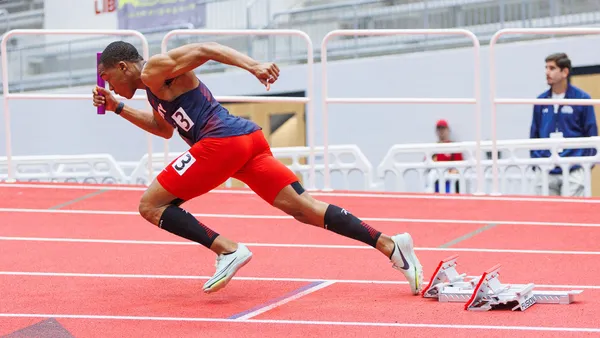
Tracks serve as the foundation for athletes to showcase their abilities and achieve peak performance. To ensure that tracks remain in optimal condition and provide a safe environment, regular maintenance and repair are essential. This section delves into the importance of track maintenance, common maintenance practices, and techniques for effective track repair. Whether you're a track manager, coach, or athlete, understanding these aspects is crucial for preserving the integrity and longevity of your track.
- Regular track maintenance can extend the lifespan of the track, resulting in significant cost savings in the long run.
- Proper maintenance helps prevent accidents and injuries, safeguarding athletes and ensuring a safe environment for all.
- Well-maintained tracks enhance performance by providing consistent and predictable surfaces, enabling athletes to push their limits without hindrance.
Track maintenance typically involves a combination of routine inspections, preventive measures, and timely repairs. These may include:
- Regular cleaning to remove debris, dirt, and other contaminants that can damage the track surface.
- Monitoring for signs of wear and tear, such as cracks, holes, or uneven surfaces, and addressing them promptly.
- Applying sealants and coatings to protect the track surface from harsh weather conditions and UV radiation.
- Adhering to proper drainage systems to prevent waterlogging and surface damage.
Track Surface | Common Issues | Repair Techniques |
|---|---|---|
Synthetic Tracks | Tears, blistering, and loss of elasticity | Patching, resurfacing, or complete track replacement |
Tartan Tracks | Fading colors, cracking, and surface irregularities | Color restoration, crack filling, and surface leveling |
Grass Tracks | Weed growth, uneven surfaces, and poor drainage | Weed control, leveling, and drainage improvements |
To ensure effective track repair, it's essential to address issues promptly using appropriate techniques and materials. This often involves:
- Crack Repair: Filling cracks with specialized track repair compounds or sealants.
- Surface Patching: Removing damaged sections and replacing them with new, compatible material.
- Resurfacing: Applying a new layer of track material over the existing surface to restore its uniformity and performance characteristics.
- Drainage Improvement: Installing or repairing drainage systems to prevent water accumulation and damage.
By prioritizing track maintenance and repair, stakeholders can ensure that tracks remain safe, high-performing, and conducive to achieving athletic goals. This not only benefits athletes and coaches but also contributes to the overall success and reputation of the track facility.
IV. Track Safety: Mitigating Risks and Ensuring a Positive Experience
Track Safety: Mitigating Risks and Ensuring a Positive Experience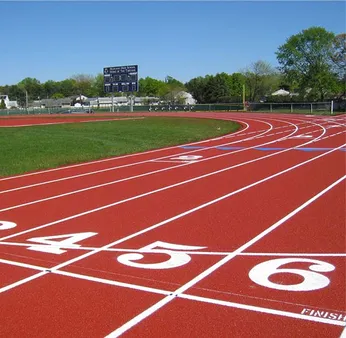
When engaging in track activities, safety should be paramount. Implementing measures to minimize risks and create a positive experience for athletes is essential. One crucial aspect of track safety is ensuring the track surface is well-maintained and free from hazards. Regular inspections and prompt repairs of any damage can help prevent accidents.
Furthermore, proper training and supervision are indispensable for track safety. Athletes should undergo comprehensive training to learn the techniques and skills required for their specific event. The presence of qualified and experienced coaches, who can provide guidance and supervision, is also crucial in preventing injuries and promoting safe practices.
- Maintain the track surface regularly.
- Inspect the track for hazards and damage.
- Provide proper training for athletes.
- Ensure the presence of qualified coaches.
Preventing Common Track Injuries:
Track athletes are prone to various injuries, including sprains, strains, fractures, and heat-related illnesses. Implementing preventive measures can significantly reduce the risk of these injuries:
Injury Type | Preventive Measures |
|---|---|
Sprains and Strains | Warm up properly before exercise. Stretch regularly. |
Fractures | Wear appropriate footwear. Use proper technique. |
Heat-Related Illnesses | Stay hydrated. Wear loose-fitting clothing. |
By adopting these measures, athletes, coaches, and facility managers can work together to create a safe and enjoyable track experience for all.
Continuing our discussion on track safety, let's delve into the importance of proper track design and construction.
V. Conclusion
Tracks, as we have explored, are intricate systems that demand meticulous attention to detail and ongoing maintenance to ensure optimal performance and safety for athletes. As technology continues to advance, we can anticipate further innovations in track design, materials, and construction techniques. These advancements promise to enhance track performance, reduce maintenance requirements, and provide athletes with even more exceptional conditions to achieve their full potential. Whether it's the thrill of a sprint finish or the endurance of a long-distance run, tracks will continue to serve as the stage for countless athletic triumphs and unforgettable moments.